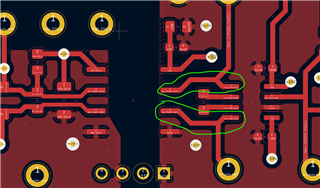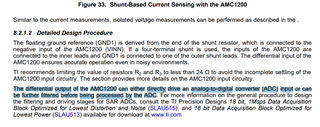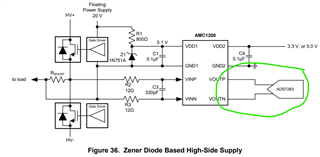Other Parts Discussed in Thread: OPA2227,
Hi!
As shown in the schematics below, we're using a AMC1200 to isolate a voltage signal, an instrumentation amplifier (AD8421) to convert the output to single-ended and an OPA2227 (U201B) to buffer the signal to a BNC coaxial connector (J201), named here as OUTPUT. VDD1 is provided by an isolated DC/DC converter, with stitching capacitors between its inputs and outputs. The relation between the OUTPUT signal on J201 and the INPUT port (VOLTAGE-TAP-IN's on left) is approximately 0.5 V/V.
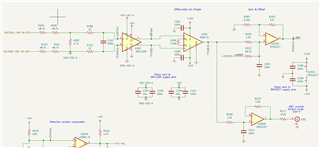
With a 0V INPUT, there's an offset of 18 mV (INPUT related) and a frequency component of approximately 4 kHz on the OUTPUT:
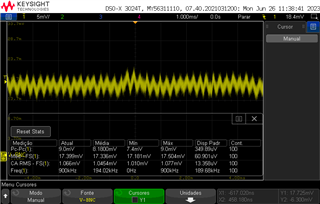
Applying -15 mV INPUT, the DC value in the OUTPUT approximates to 0 mV and the frequency component shifts to near 1 kHz:
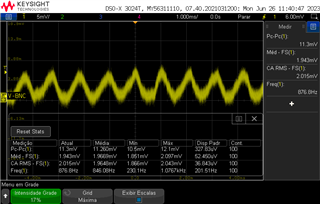
Approaching a -18 mV INPUT, the frequency decreases until it disapears:
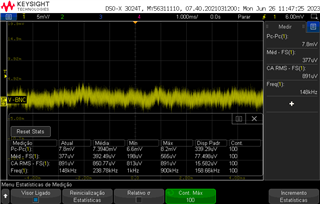
Varying the INPUT with a sinusoidal signal, we see once more the frequency decreasing when the INPUT is near 0V, and increasing when it moves away. We also see a phase inversion of the component when moving from positive to negative inputs:
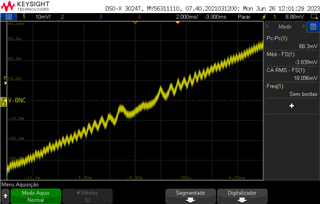
All scope images above were captured in the OUTPUT BNC connector J201, with the proper 0.5 V/V gain setting to provide INPUT related measurements.
We traced back this frequency component up to the AMC1200 outputs. We don't observe it on its inputs. We tried changing the stitching capacitors to see whether it was an EMC issue, but didn't have any effect.
Since near 0V the frequencies are too low, there's no way to filter them out.
What could be the explanation for this behavior? Do you have any suggestion on how to deal with it?
There's no information on AMC1200 regarding this, but looks like it could be explained by the delta-sigma modulator, since it operates varying it pulse density, hence "pulse frequencies".
Best regards,
Gabriel


